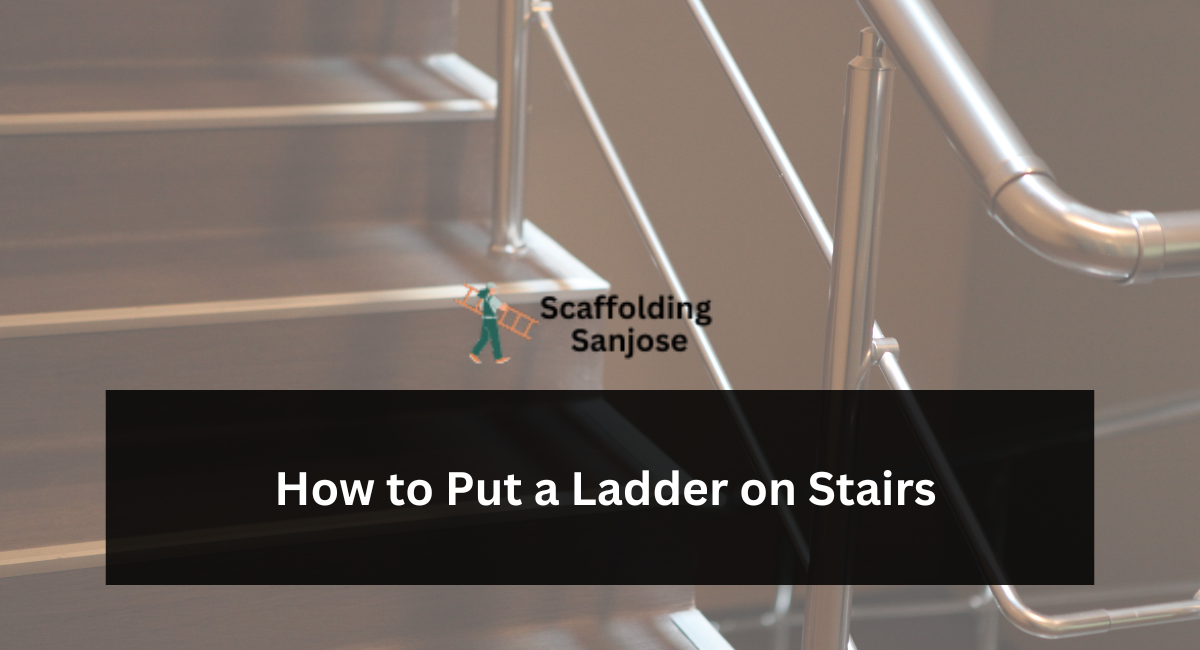Ladders can be invaluable tools for home renovation and decoration projects, yet it is essential they be used safely to prevent accidents and injuries.
Before using a ladder on stairs, it is crucial to test its stability by giving it a gentle shake and testing its movement. Doing this can help identify any unsteadiness or instabilities in its composition that could compromise its safety and result in unpredicted instability or injury.
Prepare the Stairs
As when working on any elevated surface, safety must always come first in order to minimize accidents and promote an efficient work environment. First, assess your staircase to find an optimal spot and angle for your ladder – this ensures its stability – before clearing away any tools or materials which might obstruct its use while climbing and descending it safely. Finally, maintain a firm grip on both side rails of the ladder while working.
To further increase safety, it may be beneficial to utilize ladder stabilizers or levelers that offer traction and stability across different surfaces. Also remember to wear appropriate PPE including hard hat when climbing a ladder – standing on its top rung can lead to instability that leads to falls, so always climb one rung at a time while maintaining balance without excessive swaying.
Measure the Stairs
If you haven’t done so already, prepare your ladder by cleaning and inspecting it to make sure that it is fully functional and safe. Extend or unfold the ladder to ensure stability before using a tape measure to measure its height.
Measure the total height of the staircase by taking its measurements: its rise and run. A rise refers to the vertical distance between steps while run measures the length of each individual tread – it must provide comfortable footing when standing on it. If your stairs feature a nosing overhang, this should also be included as part of its run measurement.
Consideration should also be given to the clearance space needed for installing your ladder, which varies based on its type and the floor-to-attic floor height. Most attic ladders require about 2 feet of clearance space in front of them for effective operation; check its specifications to learn more.
Install the Ladder
Experience in placing ladders safely on stairs is essential whether you are a professional contractor performing repairs or an amateur DIYer painting the walls or switching out light bulbs, as it allows you to reach hard-to-reach spots that would otherwise be dangerous or difficult.
Befor you put a ladder onto the stairs, make sure all its locks and braces are fully engaged. Apply some weight to its base in order to test its stability and directional alignment; if there is any sign of movement or instability then adjust its base and angle until it becomes safe enough for climbing.
Anchor or bracket your ladder securely to the stairs using ladder anchors or brackets for extra peace of mind. This prevents lateral movement and ensures your ladder remains steady and ready for use. Once secured, begin your project! Be sure to abide by all safety standards when working from a ladder – especially stairs!
Secure the Ladder
Before using a ladder on stairs, it is imperative to take all necessary precautions in order to prevent accidents and injuries. A thorough assessment should include noting any potential hazards or obstacles which could affect placement and movement, and any issues should be resolved as quickly as possible in order to protect workers and avoid accidents or injuries.
Ladder levelers and stabilizers can help ensure that ladders remain securely placed on stairs. Attaching these accessories directly to the feet or surface of the staircase helps maintain stability and prevent tipping over.
As with any task undertaken while using a ladder, it’s vital that tasks are carefully planned out prior to being executed and that its surroundings are free from potential trip hazards and debris. When working on stairs it may also be useful to have someone act as a spotter to provide extra support and safety while climbing; during which maintaining three-point contact between your hands (two hands with one foot each or two hands and one foot together) helps to keep balance and prevent falls.
Conclusion
When it comes to placing a ladder on stairs, safety is paramount. By following these steps, you can ensure a secure setup that minimizes risks and maximizes stability. Remember to always prioritize caution and balance when maneuvering a ladder on stairs, as a careful approach guarantees a safe and successful task completion.

